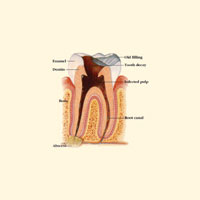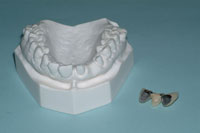Influencing patients to commit to appropriate treatment is a prime concern of most dentists. To achieve this goal, they use the classic medical model. This method focuses on transmitting clinical data to the patient on the assumption that it is compelling enough for the patient to proceed with the care recommended. But if data alone were sufficient for patients to do what’s in their best interest, then no one would be smoking cigarettes. At Pride Institute and Pankey Institute, we propose an enhanced model for the new-patient experience, one that results in patients embracing comprehensive care.
In the classic medical model, the professional lectures the patient regarding his or her condition. The focus is on what is wrong and how it can be fixed. The patient’s first experience with the doctor consists of the professional poking and probing, comparing the findings with “normal,” and then conjuring up the appropriate treatment. In the enhanced model, the doctor asks questions, listens with intent, encourages engagement, and addresses the patient’s wants and concerns so that he or she is an active partner in the process.
 |
|
Photograph by Nathan Zak and Cheryl Gloss |
Albert Schweitzer postulated that all patients come with a doctor inside, ie, with more knowledge about their present condition than they realize. The role of the doctor in the enhanced model is to unleash that internal physician. The staff, too, must take on new roles in this patient-centered process. In the classic medical model, the assistant records data, remaining seen but not heard. In the enhanced process, the assistant is an active participant, making statements and asking questions that engage the patient. Because patients often turn to dental assistants to answer their questions and concerns, these essential team members must wholeheartedly support the process and, ideally, have experienced it themselves. When this occurs, the assistant can provide the most powerful answers to the patient’s questions and endorsement of the dentistry, namely: “I believe in it. I had it myself. And I paid for it.”
There are 5 key steps in creating an enhanced patient experience:
(1) Seeing Your Vision for Ideal Care
(2) Sharing That Vision With Team and Patients
(3) Implementing It
(4) Being Compensated Fairly
(5) Measuring Results
SEEING YOUR VISION FOR IDEAL CARE
Before trying to improve your patient’s experience, create a clear, compelling picture of the outcomes you want to achieve through this change. If your values are inconsistent, then you can unwittingly confuse your team and patients with mixed messages. For example, one dental practice sends new patients a letter noting, “Our mission is to provide patients with warm, caring, and exceptional service.” Yet the dentist rushes into the room 30 minutes late, immediately dons mask and gloves, and begins the clinical exam. Transforming the vision into a driving force in your practice requires more than simply citing it in a letter. Only when you, the leader, see the vision clearly can you act to make it a reality.
Your vision must include the following:
• the balance you seek between work and home
• the type of dentistry you want to do
• the ideal patient you strive to serve
• the qualities for which you want to become known in your community
• the role you expect your staff to play in realizing your vision.
SHARING THAT VISION WITH TEAM AND PATIENTS
After formulating your vision, share it with your staff, patients, and everyone you deal with. Your team members need to embrace the vision in order to create and manage systems to achieve it. You need to broadcast your message to them from their favorite radio station, WIIFM (What’s In It For Me?), so that they see actual benefits to themselves in helping you accomplish your vision. This does not mean dangling the carrot of a bonus before your team members if they promote ideal care and service. Seeing how the vision benefits everyone means that your team members fundamentally believe in the practice values, recognize and respect the quality of your dentistry, take pride in fully supporting recommended treatment, and link their own professional growth and fulfillment to the noble calling of your practice.
A key tool in sharing the vision is a written statement of it that the dentist creates. Some facilitators call this practice vision a “mission statement” because it represents the reasons for the team members to exist, the things they hope to accomplish, and the methods by which they will hold themselves accountable. In order to flesh out this proud document of your guiding principles and give it the force of reality, it must be more than a mental picture. A carefully crafted written statement will transform the vision into a tangible guideline for action. This important statement includes the following: who we are; why we came together; what we will accomplish together; whom we will serve; what we can expect from each other; and what we expect from those we serve.
The practice vision makes it possible to create team goals that support it. These goals will include the following:
- your business expectations, including the production levels required to support
the practice - the number of new patients needed
- the marketing strategy for communicating your unique image and finding your targeted patients.
The vision will vary by dentist. The vision of a dentist who desires a casual, fun-loving, home-like atmosphere to attract children and families in a small town will be different from one who seeks an adults only, aesthetic practice for urban professionals.
Sharing the vision with your patients means conveying a consistent message reflected in every patient encounter with the practice. The telephone discussion, marketing materials, patient education forms, and correspondences must all communicate how you wish to be seen. If your marketing materials state, “We cater to cowards,” then you will attract patients who fear the dentist. A statement such as, “We offer the highest quality of care for your long-term oral health,” targets those wanting complete dentistry. If your vision is to give comprehensive care, then sharing it may be as simple as inviting those patients who already know and trust you to experience a comprehensive evaluation. Going beyond disease control and becoming partners in their dental health is what these patients may well be waiting for.
IMPLEMENTING IT
After you create and share your vision, the next step is, à la the Nike slogan, “Just do it.” Because you have been trained to observe and collect clinical data, the more challenging part of “just do it” lies in communicating what you see in terms of the patient’s values, needs, and concerns. For example, you may discuss the need for a crown in terms of how it will allow the patient to eat his or her favorite food without discomfort, improve the person’s smile, or relieve pain, depending on that individual’s circumstances, temperament, and objectives.
As you conduct the exam, communicate what you see by asking questions: How long has this been bleeding? How long has pus been coming out here? How long has this tooth been loose? Show your patients what you are seeing and observe their eyes, facial expressions, and reactions as you draw them into the evaluation process. The enhanced experience is one of dialog rather than monolog. The dentist stops at something noteworthy, withdraws instruments from the patient’s mouth for a moment, and invites the patient to comment. In the enhanced model, the doctor shows a heightened awareness of the patient, not just the patient’s dental needs. One skill for doing this is listening to patients with wonderment and curiosity, following the dictum, “When I speak, I voice what I already know. When I listen, I learn.” This heightened level of communication with patients is far more significant than a 5% courtesy adjustment, or any other mechanical device, in their understanding and embracing ideal oral health.
In order to implement your new approach without undue stress and confusion, begin gradually. Schedule a few enhanced exams per month, then set goals to increase their number incrementally. Throughout the implementation process, meet with your staff to identify successes, challenges, and modifications needed.
BEING COMPENSATED FAIRLY
If practicing your best dentistry does not compensate appropriately, then you will feel that your vision is impractical, become discouraged, and give up your dream. This is why being profitable is essential to your success.
Proper compensation rests on setting appropriate fees. To do this, you need to know your numbers, ie, the fixed and variable costs—lab, dental supply, and general and administrative costs—of providing the treatment, as well as the compensation you need to be fulfilled personally. It is all too common to find dentists who spend copious amounts of time with their patients, invest in technology, and create an ideal experience for the patient, yet charge fees that are not in sync with those expenses. Exceptional practices need to set commensurate fees and be comfortable in explaining them to patients. When a shopper says, “Dr. Smith charges less for the same procedure,” your answer might be something like this: “I can’t speak for Dr. Smith. But we know our fees represent the high level of care and service we deliver and the quality of materials we use for effective, long-lasting restorations. Our patients appreciate our care and gladly pay the fees that permit us to provide it.”
Patients will feel the fee is appropriate if (1) they like and trust you, (2) they are committed to the treatment presented, and (3) you can make that treatment affordable through flexible financial arrangements. You gain the patient’s trust and commitment through the comprehensive evaluation because this process uncovers the patient’s needs, desires, and values and allows you to present treatment in terms of them. Instead of focusing on a concern for cost, emphasize how appropriate treatment will address the patient’s real wishes for life—like the ability to go to dinner with a beloved grandchild and enjoy eating favorite foods with complete comfort. This puts the dentistry into the patient’s life and makes a solution to the problem priceless.
It is also vitally important that doctors be willing to quote fees and feel comfortable in doing so. This means you may have to work on gaining that comfort. When you are 2 minutes into a treatment discussion and the patient asks how much it will cost, you must reply. Look the person in the eye, quote the “based-on-everything-I-know-now-it-will-not-exceed” fee, and then continue when the patient is ready to move on. If you avoid answering the question and pass this task to a staff member, then it may seem as though you don’t know the fee or you lack confidence in the appropriateness of the dentistry or your ability to provide it. If the patient senses that you feel uncomfortable, then he or she will have difficulty accepting the treatment, let alone deciding how to pay for it. A comprehensive evaluation provides you with the necessary information to feel confident in the plan you have presented.
After gaining commitment, a final barrier often is the cost. Many patients are not concerned with the actual cost of the treatment but with the inability to write a check for the lump sum right then. This can be resolved by continuing to understand the patient’s circumstances, temperament, and objectives, and arriving at payment options that are both practical for the patient and financially sound for the practice.
MEASURING RESULTS
In order to ensure that your evaluations are effective and meeting your patients’ needs, you need to keep an ongoing statistical evaluation of results. This includes knowing, and thereby controlling, the following factors:
• your ideal patient profile
• the size of your active patient base
• the amount of delayed treatment in your base
• the number of new patients you are seeing
• the percentage of new patients that meet your ideal patient profile
• the percentage of ideal treatment presented that was accepted as compared to your goal.
Before marketing for new patients, answer the question, “How many are enough?” If you are currently seeing a large number of new patients who do not meet your ideal profile, then you must consider why those patients are attracted to your practice and redesign your marketing efforts appropriately. If you have sufficient patients of record and dental treatment needed by them, then you can attract fewer new patients, focusing instead on bringing your current patients to a new understanding of their dental condition. If your patients are accepting 100% of the treatment you are presenting, then analyze if you are shying away from offering comprehensive care for fear that patients will scoff at the cost or leave your practice. Numbers give a wealth of information to assist you and your team in pinpointing problems, modifying strategies and procedures, improving results, and ultimately attaining your practice vision.
CONCLUSION
Ascend the 5 steps described in this article and you will be well on your way to developing a comprehensive evaluation. In doing so, you will enhance each patient’s understanding of his or her health and needs, raise your level of patient care, fully meet your patients’ long-term oral health needs, and improve your practice. You will be the best that you can be.
Ms. Morgan is CEO and lead trainer of Pride Institute, the firm helping dentists master the business side of their practices. For 2 decades Ms. Morgan has consulted one-on-one with hundreds of doctors to end cash-flow crises and to improve practice management. She is a lively speaker at major dental conferences and conducts seminars and workshops for dentists and teams to turn average or underperforming practices into satisfying and successful ones. For more information on leadership and management study, continuing education courses, and training materials, or to reach the author, call Pride Institute at (800) 925-2600 or visit prideinstitute.com.
Dr. DeWood is clinical director of the Pankey Institute. He and Ms. Morgan are co-teaching a 2-day seminar, “New-Patient Exam,” which aids dentists in implementing the enhanced new-patient model in their practices. For cities and dates and to reserve your place in this program, call Pride Institute at (800) 925-2600 or visit the Web site prideinstitute.com. To reach Dr. DeWood, call (305) 428-5500 or e-mail him at gdewood@pankey.org.











